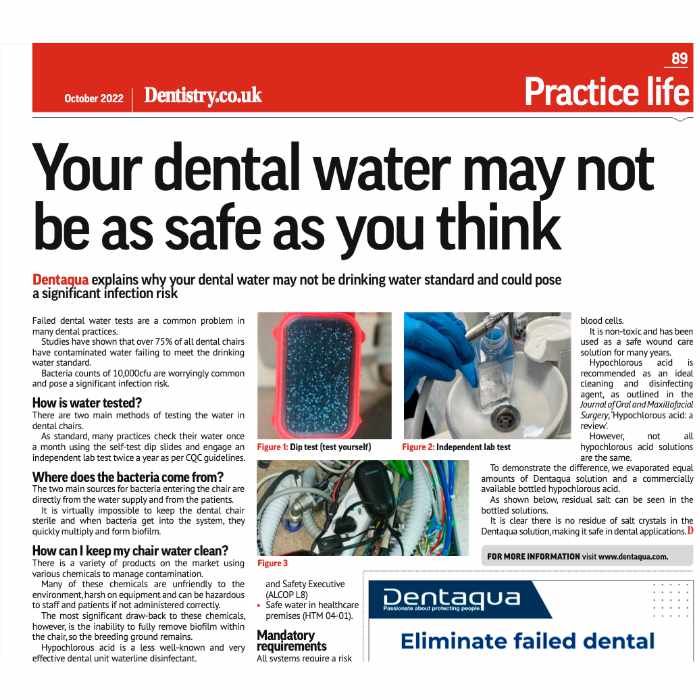
How is water tested?
There are two main methods of testing the water in dental chairs. As standard, many practices check their water once a month using the self-test dip slides and engage an independent lab test twice a year as per CQC guidelines.
Where does the bacteria come from?
The two main sources for bacteria entering the chair are directly from the water supply and from the patients. It is virtually impossible to keep the dental chair sterile and when bacteria get into the system, they quickly multiply and form biofilm.
How can I keep my chair water clean?
There is a variety of products on the market using various chemicals to manage contamination. Many of these chemicals are unfriendly to the environment, harsh on equipment and can be hazardous to staff and patients if not administered correctly.
The most significant draw-back to these chemicals, however, is the inability to fully remove biofilm within the chair, so the breeding ground remains. Hypochlorous acid is a less well-known and very effective dental unit waterline disinfectant. It is non-toxic and has been in use in dentistry for over 20 years. It is effective because of its ability to actually kill the biofilm within the chair.
Should I be concerned?
In general, healthy patients have an immune system that can fight off low levels of pathogens. However, elderly or immuno-compromised patients can be at significant risk. The actual dental procedure being carried out is also a risk factor, with open wounds and bone contact carrying a higher potential infection risk.
What are the guidelines?
Registered managers of dental practices have an overriding general duty of care under the Health and Safety at Work Act 1974.
Part of this duty of care is ensuring that the water supply, storage and distribution services should comply with the best practice guidance given in:
• Approved Code of Practice and Guidance L8,Health and Safety Executive
(ALCOP L8)
• Safe water in healthcare premises (HTM 04-01).
Mandatory requirements
All systems require a risk assessment; however, not all systems will require elaborate control measures.
• All premises should have a written waterline management scheme and legionella risk assessment
• The registered manager must ensure that all the recommendations are implemented
• Water and air lines must be fitted with anti- retraction valves
• It is mandatory to control legionella within the dental waterline system.
How can Dentaqua help?
Dentaqua supplies counter-top hypochlorous acid generators. The hypochlorous acid can maintain your dental water below 100cfu consistently. It even kills existing biofilm if your chair is already contaminated. Hypochlorous acid is found naturally in white blood cells.
It is non-toxic and has been used as a safe wound care solution for many years. Hypochlorous acid is recommended as an ideal cleaning and disinfecting agent, as outlined in the Journal of Oral and MaxillofacialSurgery, ‘Hypochlorous acid: a review’.
However, not all hypochlorous acid solutions are the same.
To demonstrate the difference, we evaporated equal amounts of Dentaqua solution and a commercially available bottled hypochlorous acid. As shown below, residual salt can be seen in the bottled solutions.It is clear there is no residue of salt crystals in the Dentaqua solution, making it safe in dental applications.
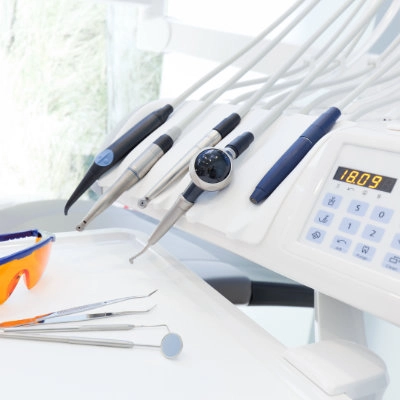
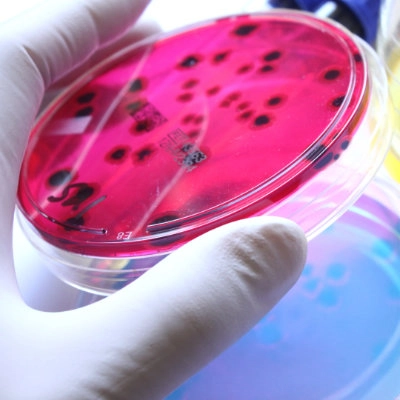


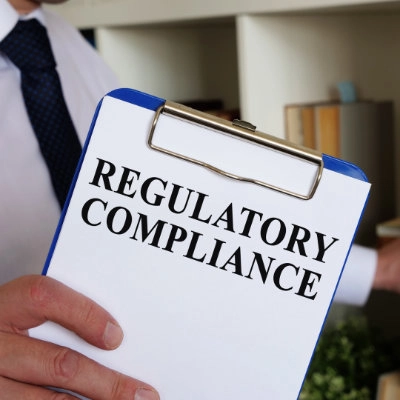
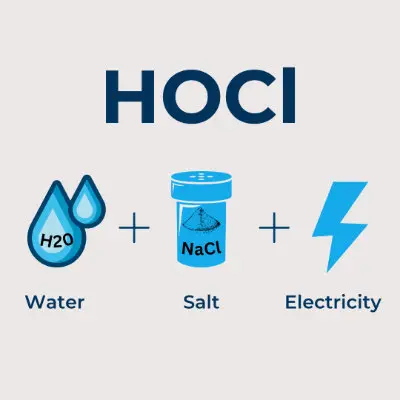


Email: admin@dentaqua.com
IE: +353 52 6154244
Unit 1, Gurtnafleur Business Park,
Clonmel, Co. Tipperary,
Ireland